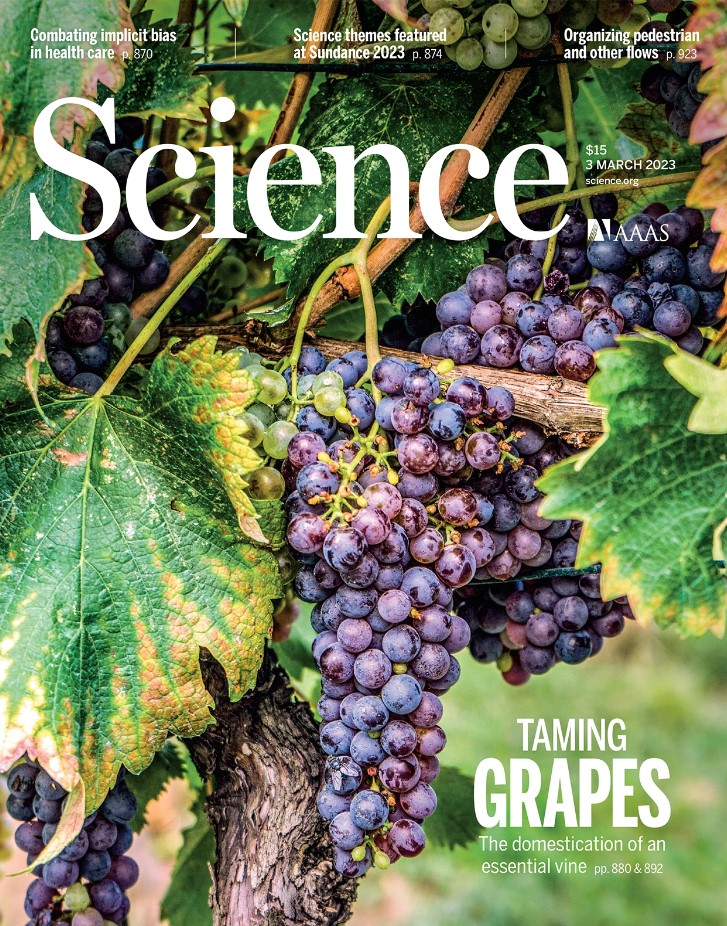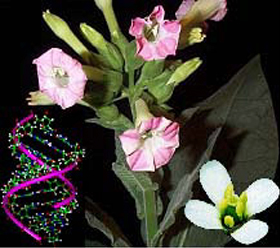Neu: Genschalter macht Sorghum-Hirse salztolerant
 |
Durch den Klimawandel steigt der Meeresspiegel an, daher werden immer mehr fruchtbare Flächen immer salziger. Das Nildelta, Bangladesh, Vietnam, aber auch der Süden Italiens sind schon heute mit dem Problem Salzstress konfrontiert. Können wir Kulturpflanzen finden, die auf solchen Böden noch wachsen können? In der Vergangenheit haben wir uns, angestoßen durch unseren syrischen Mitarbeiter Dr. Adnan Kanbar, mit der Stressresilienz der Sorghum-Hirse befasst. Diese uralte Kulturpflanze stammt aus dem Sudan und behauptet sich auch unter harschen Bedingungen. In der Tat konnten wir zeigen, dass manche Sorghum-Sorten nicht nur mit Salz zurechtkommen, sondern unter solchen Bedingungen auch mehr Zucker bilden. Was mit diesem Zucker geschieht, ist unterschiedlich - manche Sorghum-Sorten speichern ihn im Stängel, was für eine bio-ökonomische Nutzung (etwa für die Gewinnung von Bioethanol) interessant ist, andere speichern ihn in den Samen, was für die Ernährungssicherheit in Gegenden wichtig ist, die von der Bodenversalzung gebeutelt sind. Während ihrer Promotion konnte unsere ägyptische Mitarbeiterin Eman Abuslima den Grund für die unterschiedliche Zuckerverwertung finden: ein Genschalter für den Zuckertransporter SWEET13 entscheidet. Eine besonders aktive Version dieses Schalters konnten wir in der alten syrischen Landsorte Razinieh finden. Durch Züchtung kann man nun diesen Schalter in andere Hirsesorten einkreuzen und mithilfe des molekularen Wissens die Nachkommen mit der richtigen Variante schon im Keimlingsstadium durch eine PCR herausfinden. Veröffentlichung 216. Abuslima E, Kanbar A, Ismail A, Raorane ML, Eiche E, El-Sharkawy I, Junker BH, Riemann M, Nick P (2025) Salt stress-induced remodeling of sugar transport: a role for promoter alleles of SWEET13. Nature Sci Rep 15, 7580 - pdf
|
||
Research in the Botanical Garden

The Botanical Garden at the castle and the Botanical Garden of the KIT were originally one unit, also spatially. Already from its very beginnings, research has been a central topic of the Karlsruhe Botanical Garden. The botanist discovered in plants the rules of inheritance (around a century before Mendel, and long before the university was founded). This legacy of research has been inherited by the Botanical Garden of the KIT. The Garden is essential for the research at the KIT.
Research for sustainability: Climate change has reached Germany already. Even if we succeed to slow its progression, the negligence of the past will make our agriculture impossible in its current form. We need new crop plants endowed with a superior resilience, and we need new practices to improve the resilience of our current crop plants. At the Botanical Institute we investigate on different levels - genes, molecules, cells, entire plants - how resilience emerges and how we can improve it. During their domestication by humans many crop plants have lost their original resilience, but these genes are often still present in wild relatives or in ancestral species. The Garden helps us to safeguard this biodiversity, but also to render it fertile for the challenges of our times.
Model plants: Model plants allow to study conveniently what particular genes are actually good for. Whether Thale Cress, Rice, Grapevine, Tobacco or Tomatoes – without the professionality and competence of our gardeners our research would be impossible. We do not only try to uncover the molecular base of development, growth and metabolism. This research stimulates important applications – using Arabidopsis new technologies such as CRISPR-Cas can be perfectionated, rice genes allow to breed drought resistant plants, or genes from wild grapes improve plant immunity.
Wild Grapevine Collection: Our collection harbours meanwhile the complete gene set for Vitis sylvestris, the ancestor of our grapevine and serves as important to breed new grape varieties that are immune against diseases, such as the Esca Syndrome that spreads in consequence of climate change. Recently, the entire genomes of these wild grape has been deciphered and deposited in a database. As next step we want to assemble all wild grapes in Europe – both as plants and as deciphered genomes – in the Botanical Garden.
Reference Collection for Molecular Authentication: Globalisation yields a steady flow of new plant products to our markets, a challenge for consumer safety. We develop new methods to detect fake food. Our collection of validated reference plants is often requested by industrial partners, but also international collaborators.
Gene Bank Crop Wild Relatives: Crop Wild Relatives often harbour genes that have been lost during domestication. We have collected those relatives all over Germany and established a gene bank to secure diversity for the future. The goal is to breed plants that are able to cope with the challenges of the future. And this treasure is already tapped – for instance by our project FragAnanas: wild strawberries from the heights of the Black Forest donate genes to render Egyptian strawberries resilient to occasional frost episodes in cold desert nights.
What we are currently investigating
| Nick Lab | AG Puchta |
|
|





